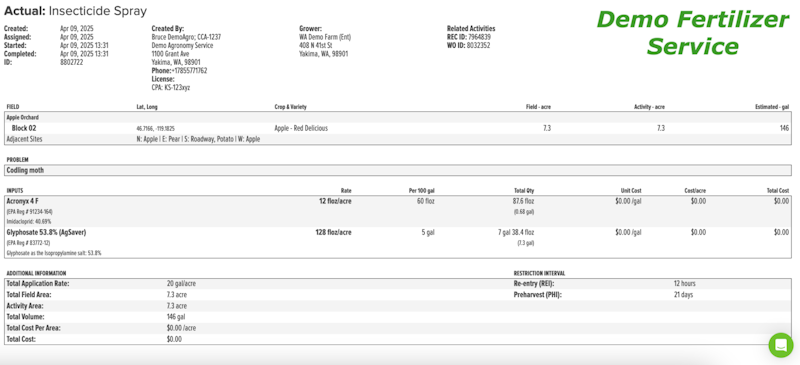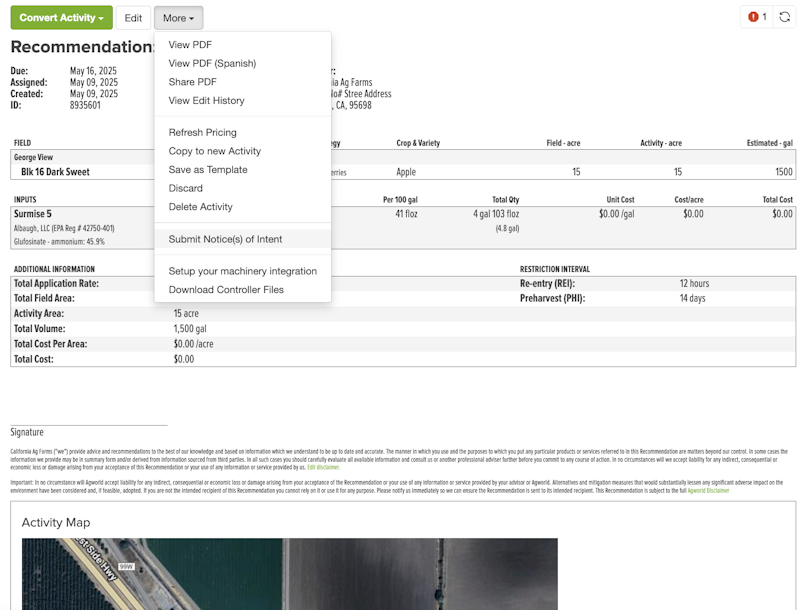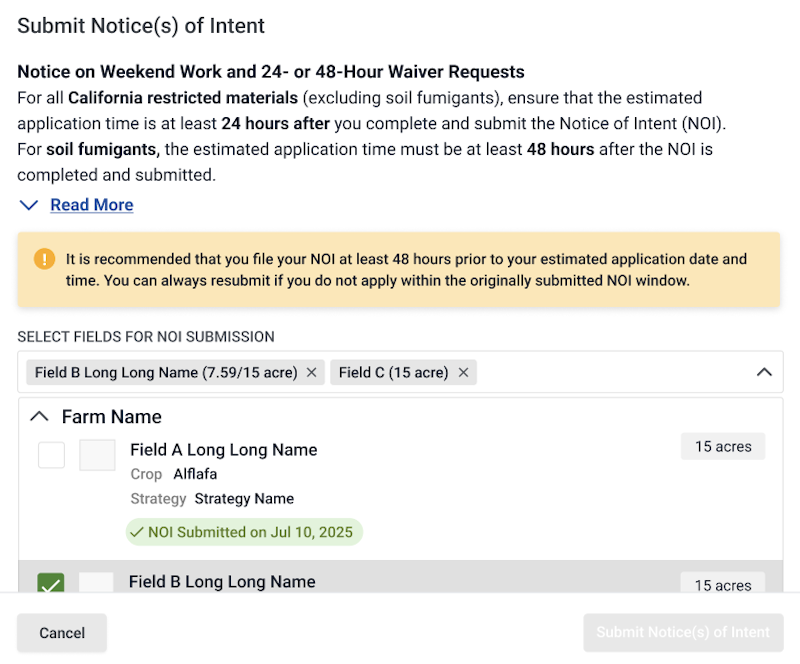Making sure recommendations and applications are compliant with regulations is important for agronomists everywhere, but for none more so than for growers and PCAs in California, due to the strict regulatory environment they operate in.
Agworld is one of the most popular Farm Management Information Systems in California, and so it is important for us to make sure our user users have access to the best possible features to make sure they are compliant at all times. But, while these features might be required for Agworld users in California, they're often just as useful for users in different states and countries….
We've recently released a number of feature enhancements focused on compliance that I'm very excited about, as they'll help you simplify a lot of your compliance processes even further! If you have a question about any of the features listed below, please don't hesitate to contact me or your dedicated Agworld account representative.
Adjacent Sites
"Adjacent Sites" is a new capability in Agworld that empowers growers and applicators with critical site context during crop protection planning and execution. This feature allows you to record, manage, and document neighboring fields or sensitive areas—such as schools, public pathways, or organic crops—directly within Agworld's mapping and activity workflows.
Developed to meet legal and operational demands, especially for Californian growers governed by CCR Section 6434 (11), the Adjacent Sites feature eliminates manual workarounds and elevates compliance confidence. California-based PCAs and applicators must include adjacent site data in recommendations to remain compliant, and doing so in Agworld is now quick and easy.

Instead of writing manual recommendation annotations, adjacent site data now auto-fills this data in activity PDFs, providing users with critical visual context on field maps. This setting is enabled at organisation-level via 'compliance settings' in Agworld, and with it you can add adjacent site details to each field. Site data will appear in the 'location' section of each recommendation and work order PDF, is set as 'multi-season' by default (great for permanent crop scenarios), and supports custom crops and freeform information entries.
With adjacent site information in Agworld you can map your surroundings and protect your applications. Instead of guessing, you can give your applicators full field context. stay compliant, and everyone's crops stay safe… a win all around!
Enhanced NOI Submission workflow
We've upgraded Agworld's Notice Of Intent (NOI) submission workflow to provide users with more granular control over estimated application start times, specifically for large multi-field recommendations involving restricted material pesticide use that span multiple time windows.
This upgrade enables you to submit detailed NOIs quickly and accurately - even across multiple fields to meet regulatory expectations with confidence. Stay compliant with CalAg, get ahead of increased scrutiny, and document every part of your recommendation with confidence.

How It Works
- Start in the Activity Detail Page from the web application:
Click “More” → “Submit Notices of Intent”. - Select Fields for NOI Submission:
Choose individual fields or "Select All" to cover the full recommendation. - Review Crop and Permit Info:
Preview critical details before finalizing. - Set Estimated Date & Time of Application:
Assign field-specific start/end times. Use “Copy Time” to apply the same schedule across multiple fields if needed. - Submit NOIs Individually:
Each field now carries its own unique proposed timing for greater clarity and compliance. - Post-Submission Feedback:
You'll be notified of submission success or failure. Already-submitted fields will be marked with submitted dates for ongoing NOI workflow management - Repeat as Needed:
Come back to submit the remaining fields when they are ready to be scheduled.
Note: These improvements are currently available on Agworld Web App. The iOS NOI submission workflow remains supported for users who prefer mobile workflows but is limited to full-rec submission (submitting all fields on the rec with the same start and end time).

With this improved workflow you can now submit NOIs for each field individually with specific estimated start and end times. It also enables you to confidently track which fields from a larger recommendation have already been submitted, avoiding confusion during work order execution and compliance documentation.
Auto-populate Sodium Metam templates
Growers in certain areas, and especially potato growers in the Pacific North West, have to generate Pre- and Post-Fumigation Plans following templates like the EPA's Sodium Metam format. Agworld now enables users to auto-populate Sodium Metam templates with existing data, eliminating duplication and improving accuracy.
Growers that have to adhere to this regulation are now able to dramatically reduce their administrative workload by pulling structured application data directly from Agworld. This lowers the regulatory risk through precise, timely documentation and allows you to visualize fumigation areas via embedded field maps.
Organization-managed Compliance Validation Specifications
Growers that follow strict SOPs for their operation are now supported to enforce label-check workflows to ensure regulatory alignment for every product added to a recommendation. When activated, this label-check is then required when EPA-registered products are added to a recommendation and validates state/crop registrations, use rate constraints, REI and PHI requirements, and PPE, comments and usage limitations.
Admins of an organization in Agworld can now enforce a 'full-stop', which blocks the creation of recommendation when a validation fails. This setting is ideal for ag-retailers and other service providers, regulated multi-entity organizations, audited enterprises and many other users who like the peace of mind knowing that everyone in their organization is applying products within the rate limits.
Custom Organization-level Compliance Rules
Organizations using 'Strategies' in Agworld can now define and enforce custom compliance rules at the organization level, ensuring consistency across users. These rules include active ingredient thresholds, application count limits, approved product lists and timing windows. Just like Agworld's label validation, warnings appear on activity forms in both the Agworld iPhone/iPad app, as well as the Agworld web application.





